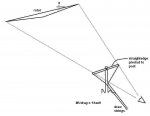RussKing
Newbie
Creative Genius
Creative Genius
Dick is a creative genius. I define it as one who sees what others don't. From Dick's perspective it is no big deal but to us mere mortals it is a wonderment.
I see a genius as one who understands what others only know. A super genius is one who understands and has the ability to articulate things in a way that mere mortals can understand. Chuck is a super genius.
These people need to be venerated. Their class of people make our lives so much better. They are the reason why we don't farm with sticks and live in squalor.
Hats off to Chuck and Dick!
Russ
Creative Genius
Dick DeGraw is the creative genius; I’m only a reporter.
Dick is a creative genius. I define it as one who sees what others don't. From Dick's perspective it is no big deal but to us mere mortals it is a wonderment.
I see a genius as one who understands what others only know. A super genius is one who understands and has the ability to articulate things in a way that mere mortals can understand. Chuck is a super genius.
These people need to be venerated. Their class of people make our lives so much better. They are the reason why we don't farm with sticks and live in squalor.
Hats off to Chuck and Dick!
Russ


